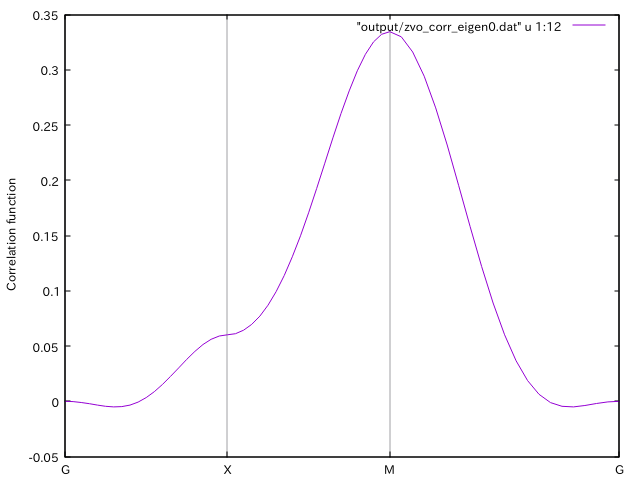Tutorial¶
In this tutorial, we explain through a sample calculation of the 8-site Hubbard model on the square lattice.
Run HPhi/vmc.out¶
For \({\mathcal H}\Phi\)
We calculate the ground state and the correlation function with the following input file
a0w = 2 a0l = 2 a1w = -2 a1l = 2 model="Hubbard" method="CG" lattice="square" t=1.0 U=8.0 ncond = 8 2Sz=0
$ HPhi -s input
For mVMC
First, we optimize the trial wavefunction with the following input
a0w = 2 a0l = 2 a1w = -2 a1l = 2 model="Hubbard" lattice="square" t=1.0 U=8.0 ncond = 8 2Sz=0
$ vmc.out -s input
We add the following line to the input file to compute the correlation function.
NVMCCalMode = 1
Compute the correlation function.
$ vmc.out -s input output/zqp_opt.dat
Then the one- and two-body correlation function are written to files
in the output/ directory.
Related files
StdFace.def (See the manuals for mVMC/\({\mathcal H}\Phi\))
zqp_opt.dat (See the manual for mVMC)
greenone.def (Specify the index of correlation function to be computed)
greentwo.def (Specify the index of correlation function to be computed)
Fourier transformation of correlation functions¶
Perform the Fourier transformation of the correlation function
by using the utility greenr2k.
$ echo "4 20
G 0 0 0
X 0.5 0 0
M 0.5 0.5 0
G 0 0 0
16 16 1" >> geometry.dat
$ greenr2k namelist.def geometry.dat
Then the Fourier-transformed correlation functions are
written to a file in output/.
Related files
output/zvo_cisajs_001.dat (Results of correlation function in the site representation)
output/zvo_cisajs.dat (Results of correlation function in the site representation)
output/zvo_cisajscktalt_001.dat (Results of correlation function in the site representation)
output/zvo_cisajscktalt.dat (Results of correlation function in the site representation)
geometry.dat (Geometry)
output/zvo_corr.dat (Correlation functions on the k path)
Display correlation functions¶
Plot the correlation function in the k space by using gnuplot.
load "kpath.gp"
plot "output/zvo_corr_eigen0.dat" u 1:12 w l

Figure 1: The spin-spin correlation \(\langle{\bf S}_{\bf k}\cdot{\bf S}_{\bf k}\rangle\) (Column 12).¶
Related files
kpath.gp (gnuplot script)
output/zvo_corr.dat (Correlation functions on the k path)
